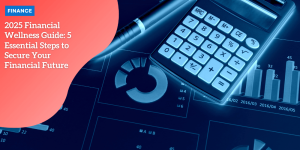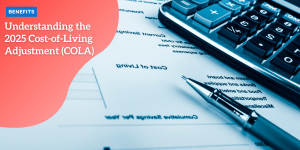How to Create Your 2025 Retirement Plan: 5 Simple Steps for Financial Freedom
Understanding the Importance of Early Retirement Planning
The Benefits of Starting Retirement Planning as Soon as Possible
When it comes to retirement planning, the earlier you start, the better.
Anúncios
Beginning your retirement planning early means giving your money more time to grow, thus increasing the potential for financial security during your retirement years.
Early planning is not just about saving more but also about leveraging the power of compound interest.
With compound interest, the returns you earn on your savings start generating their own earnings over time, leading to exponential growth.
Anúncios
Additionally, starting early allows you to take advantage of employer retirement plans that may offer matching contributions.
For example, many employers provide a 401(k) match, which is essentially free money for your retirement.
Utilizing these benefits early in your career can significantly boost your retirement savings over time.
Anúncios
In short: the sooner you start saving and investing for retirement, the more you can benefit from the power of compounding and employer contributions.
How Early Planning Maximizes Potential for Financial Growth
Starting your retirement planning early opens up opportunities for more aggressive investment strategies and greater risk-taking, especially when you have several decades ahead of you before retirement.
Younger investors can afford to invest in higher-risk, higher-reward options such as stocks because they have the time to recover from market downturns.
Historically, the stock market has offered higher returns over the long term compared to other investment types like bonds or savings accounts.
Moreover, early planning allows you to set clear financial goals and milestones, track your progress, and make adjustments as needed.
By having a long-term plan in place, you can experiment with different investment options, fine-tune your portfolio, and take calculated risks that can lead to substantial growth in your retirement fund.

It’s Never Too Late to Start Planning for Retirement
While starting early has clear advantages, it’s important to stress that it’s never too late to begin planning for retirement.
Even if you’re closer to retirement age and haven’t saved much, there are still steps you can take to improve your financial outlook.
First, evaluate your current financial situation, and start by saving as much as you can manage, even if it means making some lifestyle adjustments.
Strategically investing any available savings can still help, particularly if you focus on options that offer tax benefits or more aggressive growth potential suitable for your timeline.
For example, if you are over 50, you are eligible for catch-up contributions for your 401(k) or IRA, allowing you to save more than the standard limits.
Furthermore, delaying Social Security benefits can increase the monthly benefits you receive, which can make a significant difference in your retirement income.
Closing on these points, it’s essential to recognize the unique benefits and growth potential associated with early retirement planning.
However, the value of starting your plan, no matter your age, cannot be overstated.
Your future self will thank you.
Now, as we have understood the importance of planning, the next step is figuring out how much money you will need to retire comfortably.
Calculating Your Retirement Needs
Planning for your retirement is an essential step towards ensuring financial stability in your golden years.
Once you’ve recognized the importance of starting early, the next crucial step is figuring out how much you’ll need to maintain your lifestyle.
This chapter will guide you through estimating your retirement needs, considering your current expenses, potential lifestyle changes, and ongoing costs.
Estimating 70-90% of Pre-Retirement Income Needs
The rule of thumb is to aim for 70 to 90 percent of your pre-retirement income to maintain your current standard of living.
Let’s break down why this range is recommended:
- Reduced Work-Related Expenses: When you retire, work-related costs such as commuting, professional attire, and job-related meals will likely decrease.
- Potential Changes in Lifestyle: Your lifestyle might change in retirement. Activities like traveling, hobbies, and dining out could shift your expenditure patterns.
- Healthcare Expenses: These can increase due to age, making it essential to allocate more funds for healthcare and insurance.
For instance, if your annual pre-retirement income is $70,000, you would need approximately $49,000 to $63,000 annually in retirement.
This estimation helps provide a clear target for your savings plan.
Factoring in Current Expenses and Potential Lifestyle Changes
Diving deeper into current expenses and future lifestyle changes is crucial. Here are steps to get a closer estimate:
- Assess Current Expenses: List all your current expenses, from mortgage or rent, utilities, groceries, and transportation, to entertainment and healthcare. Use this data as a base for your retirement budget.
- Anticipate Future Needs: Think about how your needs and wants will change. For example:
- Housing: Will you downsize, pay off your mortgage, or rent?
- Travel: Do you plan to travel more or pursue costly hobbies?
- Health: Consider long-term care insurance and possible health issues.
Documenting these aspects allows you to fine-tune your retirement needs and ensure a comfortable lifestyle post-retirement.
Considering Ongoing Costs
Retirement doesn’t mean an end to all expenses; many will persist or even increase.
Here’s a closer look at ongoing costs you should account for:
- Home Maintenance: Even if your mortgage is paid off, other costs remain:
- Property Taxes: Continue budgeting for annual property taxes.
- Utilities and Insurance: Ongoing monthly expenses for utilities and homeowner’s insurance.
- Repairs and Maintenance: Allocate funds for routine maintenance and unexpected repairs.
- Leisure Activities: Whether it’s golfing, gardening, or traveling, ensure you have funds set aside for leisure activities, which contribute to a fulfilling retirement.
- Healthcare: Beyond standard health insurance, consider potential costs for vision, dental, and long-term care. Setting substantial funds aside for healthcare is crucial to avoid financial strain.
Accounting for these ongoing expenses ensures that your retirement plan is realistic and comprehensive.
As we wrap up this chapter on calculating your retirement needs, remember that accurate planning today leads to a secure and enjoyable tomorrow.
Next, we will delve into balancing multiple financial goals, ensuring you can save for retirement while handling other financial obligations seamlessly.
Balancing Multiple Financial Goals
Balancing multiple financial goals can often feel like a juggling act, especially when retirement planning is involved.
However, it’s feasible to both save for retirement and handle other financial priorities without feeling overwhelmed.
This chapter delves into effective strategies to achieve a harmonious balance between these goals.
Strategies for Simultaneous Retirement and Emergency Fund Saving
Saving for retirement while also building an emergency fund is crucial. Both have their unique importance and cannot be ignored. Here are some strategies to manage both simultaneously:
- Set Clear Priorities: Prioritize establishing an emergency fund initially. Aim for at least three to six months’ worth of living expenses. This fund acts as a financial cushion, helping you deal with unexpected expenses without dipping into your retirement savings.
- Automate Savings: Automation can significantly ease the burden of managing multiple goals. Set up automatic transfers to both your retirement accounts and emergency fund. This ensures consistent contributions without having to think about it constantly.
- Incremental Increases: Start with small amounts if your budget is tight. Gradually increase your contributions as your income grows or debts are paid off. The key is to build a habit of saving consistently.
Prioritizing Retirement Savings While Managing Other Financial Obligations
Balancing retirement savings with other financial commitments like paying down debt, saving for a home, or funding education can be challenging.
Here’s how to prioritize effectively:
- Analyze Your Budget: Scrutinize your monthly budget to identify areas where you can cut back. Reallocate those savings towards your retirement fund without compromising other financial obligations.
- Debt Management: Prioritize high-interest debt repayments first, as they can quickly spiral out of control. Once these are under control, redirect funds towards your retirement savings. Balance should be your mantra – allocate a percentage of your income to debt repayment and another to retirement savings.
- Set Measurable Goals: Clearly define and record your financial goals. For example, decide on a specific amount you wish to save for retirement and a timeline for paying off debts. Having concrete goals will prevent overlap and ensure each financial obligation is met systematically.
Maximizing Employer Matching Contributions in Retirement Plans
Maximizing your employer’s matching contributions can be a game-changer in reaching your retirement goals faster.
Here’s how to make the most of this benefit:
- Understand Your Plan: First, understand the details of your employer’s retirement plan. Know the maximum amount they are willing to match and ensure you contribute at least that much. Not utilizing the full match is akin to leaving free money on the table.
- Regular Reviews: Regularly review your retirement plan to ensure you are contributing enough to get the full employer match. As your salary increases, adjust your contributions accordingly to maximize the employer match.
- Leverage Tax Benefits: Employer contributions are tax-deferred. This means you won’t pay taxes on these contributions until you withdraw the money in retirement. It’s a win-win: you get free money and defer taxes until you’re likely in a lower tax bracket.
By implementing these strategies, you can effectively balance saving for retirement while handling other financial responsibilities.
Ensuring stability in the face of emergencies while also securing your future is crucial for a holistic financial plan.
Next, let’s delve into the importance of selecting the right retirement account that suits your needs and goals.
Selecting the Right Retirement Account
Navigating the retirement account landscape can feel like a daunting task, but with the right information, you can make informed decisions that align with your financial goals.
In this chapter, we’ll cover the different types of retirement accounts available, evaluate their tax advantages and employer contributions, and help you choose between workplace retirement plans and individual accounts.
Understanding Different Retirement Account Options
When it comes to retirement accounts, you have several options. The most common ones are:
- 💰401(k): These employer-sponsored plans allow you to contribute pre-tax dollars, which grow tax-deferred until you withdraw them in retirement. Many employers also offer matching contributions, boosting your savings 5 Steps to Retirement Planning.
- 💰 Traditional IRA: Like a 401(k), contributions to a Traditional IRA are typically tax-deductible, and the funds grow tax-deferred. You’ll pay taxes on the withdrawals during retirement.
- 💰 Roth IRA: Contributions to a Roth IRA are made with after-tax dollars, but the money grows tax-free, and withdrawals in retirement are also tax-free.
Each account type has unique benefits and eligibility requirements, so it’s essential to understand which one suits your needs best.
Evaluating Tax Advantages and Employer Contribution Benefits
The tax benefits associated with retirement accounts can significantly impact your long-term savings:
- 💰 401(k) Contributions: Contributions are made pre-tax, lowering your taxable income for the year. This can be particularly beneficial if you’re in a high tax bracket.
- 💰 Traditional IRA Contributions: Like a 401(k), contributions reduce your taxable income, and investments grow tax-deferred. This means you don’t pay taxes on your gains until you withdraw the money in retirement.
- 💰 Roth IRA Contributions: Since contributions are made with after-tax dollars, there’s no immediate tax break. However, the significant benefit is that your investments grow tax-free, and withdrawals during retirement are not taxed.
Employer contributions can also be a vital part of your retirement savings strategy.
Many 401(k) plans offer matching contributions, where your employer matches a portion of your contributions, essentially providing free money towards your retirement.
Always aim to contribute at least enough to maximize this match.
Choosing Between Workplace Retirement Plans and Individual Accounts
Deciding between a workplace retirement plan and an individual retirement account often depends on your employment situation and available options:
- 💰 Workplace Retirement Plans (401(k), 403(b), etc.): If your employer offers a retirement plan, especially with matching contributions, this is usually an excellent place to start. The immediate tax benefits and automatic payroll deductions make it an easy and effective way to save for retirement.
- 💰 Individual Retirement Accounts (IRAs): If you don’t have a workplace plan or if you’re looking to supplement your savings, an IRA can be a great option. IRAs offer more flexibility regarding investment options compared to most workplace plans. However, contribution limits are lower compared to 401(k)s.
It’s also possible to utilize a combination of both.
For instance, you might participate in your company’s 401(k) up to the match limit and then contribute to an IRA.
This hybrid approach allows you to maximize your savings while leveraging the specific benefits each account type offers.
Selecting the right retirement account involves understanding the interplay between tax implications, employer contributions, and your own financial goals.
By carefully evaluating your options and choosing wisely, you’ll set yourself on a strong path toward financial freedom and security in retirement.
As we continue to discuss these essential components of retirement planning, the next important piece is building a robust investment strategy tailored to your age, risk tolerance, and personal circumstances.
Building Your Investment Strategy
An effective retirement plan is incomplete without a well-thought-out investment strategy.
The key is to tailor your investment approach based on your age, risk tolerance, and the evolving financial landscape.
Here’s how you can shape your investment strategy for financial freedom in 2025.
Adjusting Investment Mix Based on Age and Risk Tolerance
Your age plays a significant role in determining how aggressively you should invest.
When you’re younger, you have the luxury of time on your side.
You can afford to take on more risk since you have several decades to recover from potential market downturns.
This makes high-growth investments, such as stocks, a suitable choice.
- 💰 Your 20s and 30s
During these years, focus on growth-oriented investments. Allocate a significant portion of your portfolio to stocks and equity mutual funds. These investments typically offer higher returns over the long term, though they come with increased volatility. - 💰 Your 40s and 50s
As you advance in your career and get closer to retirement, it’s wise to start balancing your portfolio. Gradually increase your allocation to bonds and other fixed-income securities. These investments provide more stability and help preserve the capital you’ve built up. - 💰 Your 60s and Beyond
At this stage, your primary goal should be to maintain your wealth and generate income. Shift a larger portion of your investments to more conservative options like bonds, Treasury securities, and dividend-paying stocks. These provide steady, reliable income streams with lower risk.
Transitioning from Aggressive to Conservative Investments Over Time
Switching from an aggressive to a conservative investment strategy should be a gradual process.
This ensures that your portfolio adapts to changing market conditions and your financial goals over time.
- 💰 The Glide Path Strategy
The glide path is a common strategy where you start with a high equity exposure and gradually reduce it as you age. For instance, you might begin with an 80-20 mix of stocks to bonds in your 20s and gradually transition to a 40-60 mix by the time you retire. - 💰 Rebalancing Your Portfolio
Regularly rebalancing your portfolio is essential to maintain your desired asset mix. This involves selling over-performing assets and buying underperforming ones to keep your portfolio aligned with your strategy. Schedule this rebalance annually or whenever there’s a significant market fluctuation. - 💰 Addressing Life Changes
Life events such as marriage, the birth of a child, or a career change can affect your investment strategy. Update your asset allocation to reflect these changes. For example, you might want to take a more conservative approach if you’re about to retire or face a significant financial responsibility.
Options for Self-Managed Funds Versus Professional Financial Guidance
Deciding whether to manage your investments independently or to seek professional advice depends on your confidence and expertise in financial matters.
- 💰 Self-Managed Funds
If you prefer to manage your investments yourself, consider low-cost index funds or ETFs. These funds provide diversification and are relatively easy to manage. Look for funds that track major indices like the S&P 500 for broad market exposure. - 💰 Professional Financial Guidance
On the other hand, a financial advisor can provide personalized advice tailored to your situation. Advisors can help you navigate complex financial products, optimize tax strategies, and provide peace of mind that you’re on track to meet your retirement goals. Ensure you choose a certified advisor with a fiduciary duty to act in your best interest.
Each approach has its merits.
Self-managing can save on fees and give you full control, while professional guidance can offer expert insights and reduce the burden of investment decisions.
Investing for retirement is an evolving journey.
Adjust your focus, balance risk, and periodically reassess your strategy to ensure you’re on the right path to financial freedom.
As you fine-tune your investment portfolio, continue to explore and adapt to new financial opportunities.





